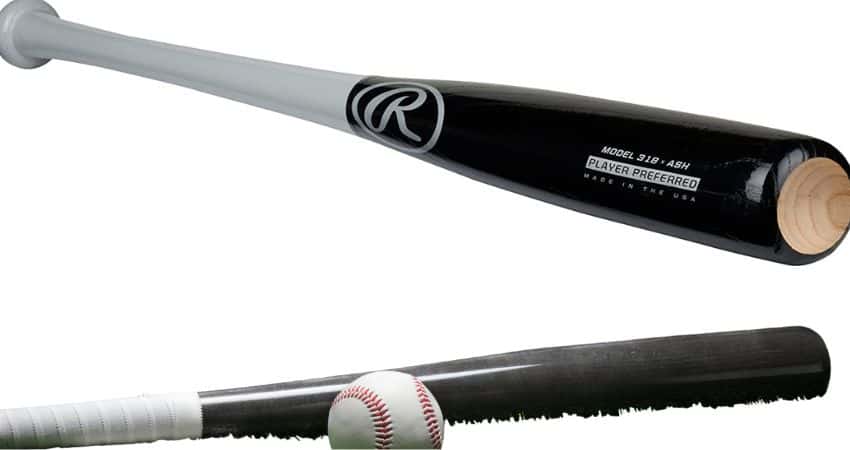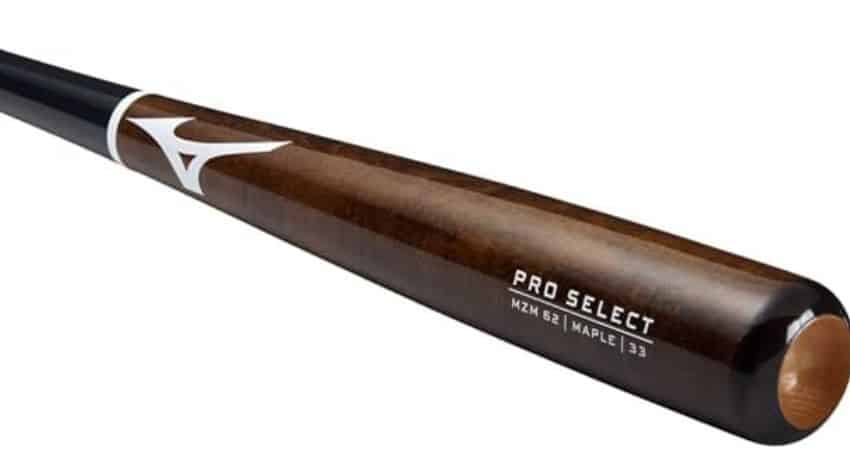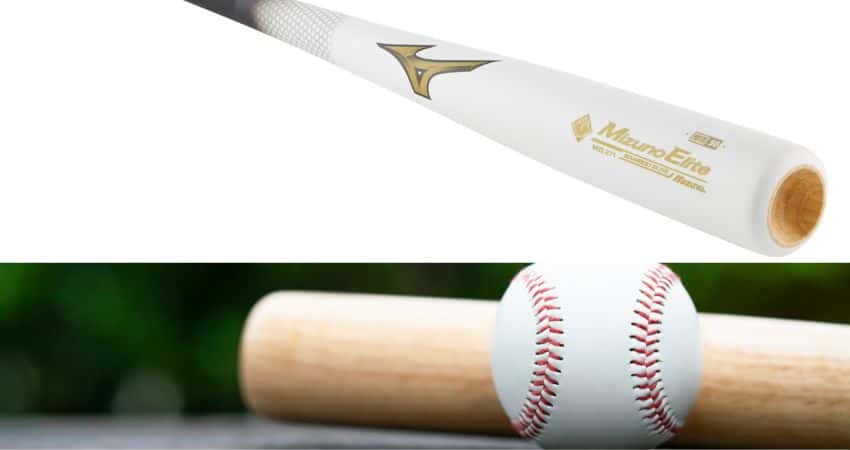The cupping of a baseball bat has become pretty common nowadays. If you don’t know what I’m talking about, you’re in the minority. That’s because most players know that a cupped baseball bat refers to when the manufacturers cut off a bit at the end of the barrel, giving it the shape of a cup.
Now while people know what cupping means, they don’t understand what it does for your bat. I mean, it’s easy to guess that it offers certain advantages over uncupped bats since it’s a relatively newer innovation, but where the advantages lie remains a mystery for most.
Well, the idea is by shaving a bit of wood off the top, the baseball bat becomes more balanced and lighter, allowing you to get a better swing speed when you use it. But does it really make a huge difference? Or is it just a clever marketing tactic meant to increase the price of a bat without you being none the wiser?
Don’t worry. I will highlight the difference between a cupped and an Uncupped baseball bat and help you understand what advantages you will get going with one bat over the other. So, let’s hop in.
Cupped vs. Uncupped Baseball Bats (Key Differences Outlined)
Here’s a short breakdown of the primary differences between a cupped baseball bat and an uncapped baseball bat. However, the chart here isn’t comprehensive. So, I’d recommend reading through the article if you want to know it all.

| Factors | Cupped Baseball Bat | Uncupped Baseball Bat |
| Feel | Balanced Feel | Top-heavy feel |
| Weight | Lighter | Heavier |
| Swing Speed | Faster | Slower |
| Sweet Spot | Bigger | Smaller |
| Playstyle | Preferred by contact hitters | Preferred by heavy hitters |
The History of Cupped Baseball Bats
Baseball bats saw a lot of changes since they were first made in the mid eighteen hundred. Back then, there was no rule about bat dimensions and diameter, and since players mostly made their own bats, there was a lot of room for experimentation. And what players discovered was that a rounded end on your baseball bat’s barrel offered the best performance.
However, around 1859, it was decided that the barrel diameter of the bat shouldn’t exceed two and a half inches in diameter, and later on, in 1869, the maximum barrel length was limited to 42 inches. That’s when modern baseball bats started taking shape.

But even then, all baseball bats had a round shape at the end of the barrel, which is what we refer to as an uncupped bat. Decades went by, and eventually, many other brands came out that manufactured high-quality baseball bats with a round shape barrel.
However, around 1970, there was a slight change in the design that quickly turned into an overnight sensation. A certain pro at the time called Lou Brock wanted his baseball bat to feel a bit more balanced and lightweight. Later on, his needs were accommodated by the infamous Mr. Saduhara Oh, fondly referred to as the Babe Ruth of Japan, who decided to hollow out the end of the barrel of the baseball bat to give it a lighter weight and more velocity on impact against the baseball.
That’s when cupped baseball bats came into existence. Of course, you can readily find cup-ended baseball stores from big manufacturers like Rawlings and Wilson, but back in those days, this design was unheard of. Needless to say, it quickly gained popularity and became a staple part of baseball history.
Differences Between Cupped and Uncupped Baseball Bats
After that brief history lesson, I’m sure you are itching to learn what differences cupped baseball bats really offer and whether they are better than their uncupped counterparts. Well, that’s what I am here for, so don’t let me keep you waiting.
In this section, I will highlight some of the key differences between a cupped and an uncupped baseball bat.

Balance of the Bat
An uncupped baseball bat is made with a solid piece of wood (usually) and is typically quite heavy. Now, the big issue that most players have with an uncupped wooden baseball bat is that it feels top-heavy, so when you hold it in the correct stance, the bat feels like it’s about to topple over.
In other words, an uncupped wood bat feels like an end-loaded baseball bat. With a cupped baseball bat, however, the extra weight at the barrel’s end is removed, which makes it more balanced.
What does that mean for a player? Well, if you are a contact hitter, a cupped bat will feel better in your hands. However, power hitters who want their bat to have a big oomph as they swing still prefer going with an uncupped baseball bat.
Swing Speed
The swing speed of a baseball bat is dictated by two things – the weight of the bat and the physical condition of the hitter. Now, there’s no way to account for the general strength of a hitter since everyone is built differently. So, that leaves us to talk about the weight of the bat.
Now, I’m sure you can see it coming from miles out – a cupped baseball bat offers a faster swing speed than an uncupped one. And since it doesn’t feel as top-heavy as an uncupped bat, it also feels more comfortable to control the momentum even if you are not very strong physically.
That being said, there’s one thing that an uncupped bat offers, and that’s momentum while you swing. Since the top part of an uncupped bat is heavier, when you swing the bat, its weight will help you follow through on the swing ensuring you have good power if it makes a successful connection.
Contact Strength
The biggest benefit that a cupped baseball bat offers to the player is that it gives you an amazing velocity on impact with the baseball. And it’s not only credited to the faster swing speed that comes with this sort of bat.
You see since the bat is cupped at the end, the center of mass in the bat becomes slightly bigger, giving you a greater sweet spot. So, getting the perfect connection on the ball becomes easier. In other words, you will see the ball hurling toward the stand more often with a cupped baseball bat.
But then again, you can’t expect the bat to do everything for you. You still need to make the right bat-to-ball connection to make that happen. The sweet spot with an uncupped bat is smaller, sure, but with perfect contact, it offers every bit as much power as a cupped bat, if not more, because of its top-heavy nature.
Selection of Construction Wood
Wooden bats are notorious for breaking frequently, and if you’ve seen MLB broadcasts, I’m sure you have seen your favorite hitter eating through a couple of bats over the course of a single game. That’s why most players prefer going with a bat that’s made of harder wood, as they last longer.
But the obvious issue that comes from going with a harder wood is that the baseball bat becomes, well, heavier. And if a baseball bat is too heavy, the pros are not going to use it. This puts the manufacturers in a weird dilemma.
Now when the bat is cupped, the manufacturers get the flexibility of going with a harder wood since they can shave off a bit of weight from the top of the bat. They can use a heavier billet if the bat is going to be cupped. However, with an uncupped bat, they don’t have this freedom.
What ends up happening is uncupped bats tend to break more frequently as a result. Some people might think that cupped bats are just more durable, but the truth is the freedom in choosing the construction wood lets cupped bats survive more abuse compared to uncupped bats.
Are Cupped Baseball Bats Better?
As you can see, there are certainly some big differences between a cupped and an uncupped baseball bat. Now while I have laid out the differences pretty clearly, I didn’t exactly say which bat design is superior. And that’s because there’s no definitive way to determine which bat is better.
You see, both uncupped and cupped baseball bats have their place in the game, and which one you go with depends entirely on your playstyle and preference. As a contact hitter, you would benefit more from the balanced weight and faster swing speed that comes with an uncupped baseball bat.
On the other hand, if you are a power hitter, the heavier weight of the uncupped baseball bat will help you drive the ball toward the stands faster. Of course, you would need to work on your muscles as well as your hitting skills to wield them effectively. But that’s part of the training if you want to be a power hitter.
In other words, make sure you understand what sort of hitter you are before you make a choice between the two bat designs. There’s no wrong answer here as long as you know what sort of hitter you want to be.
I hope my in-depth look into the differences between cupped and uncupped baseball bats could help you choose the correct bat for your needs. Good luck!
